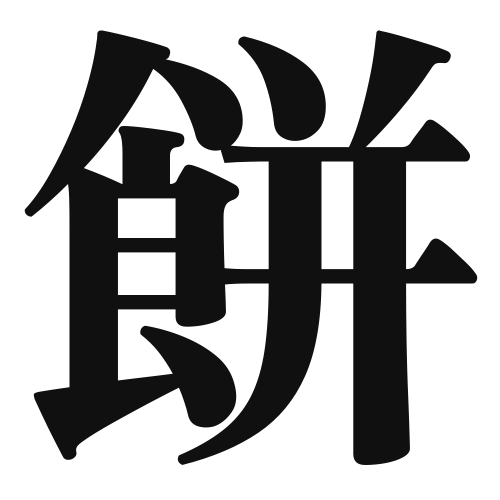1. Overview of Meaning
The kanji “餅” (mochi) refers to a type of rice cake made from glutinous rice. It is a traditional food in Japan, often enjoyed during celebrations and festivals.
2. Formation and Radicals
Formation of the Kanji: The kanji “餅” is a compound character, consisting of the radical “食” (shoku), which means “to eat,” and the phonetic component “弓” (kyū), which contributes to its pronunciation. This character is classified as a compound character (会意文字) as it combines meaning and sound.
Radical: The radical of “餅” is “食” (shoku), indicating its relation to food.
3. Examples of Usage
Common Words and Phrases: Some common phrases that include “餅” are “餅つき” (mochi-tsuki), which means “mochi pounding,” and “お餅” (o-mochi), a polite way to refer to mochi.
Example Sentences in Daily Conversation:
- 「お正月にはお餅を食べます。」(On New Year’s, we eat mochi.)
- 「餅つきのイベントに参加しました。」(I participated in a mochi-pounding event.)
4. Synonyms and Antonyms
Similar Kanji: A similar kanji is “団子” (dango), which refers to a different type of rice dumpling. While both are made from rice, “餅” is typically sticky and chewy, whereas “団子” is often round and can be served on a skewer.
Opposite Meaning Kanji: There isn’t a direct antonym for “餅,” but “乾燥” (kansō), meaning “dry,” can be considered an opposite in terms of texture, as mochi is moist and chewy.
5. Cultural and Historical Background
Relation to Japanese Culture: Mochi has a significant place in Japanese culture, especially during the New Year celebrations and various festivals. It symbolizes prosperity and good fortune.
Proverbs and Idioms: One common saying is “餅は餅屋” (mochi wa mochiya), which translates to “Leave it to the mochi shop,” meaning that it’s best to let experts handle their specialties.
